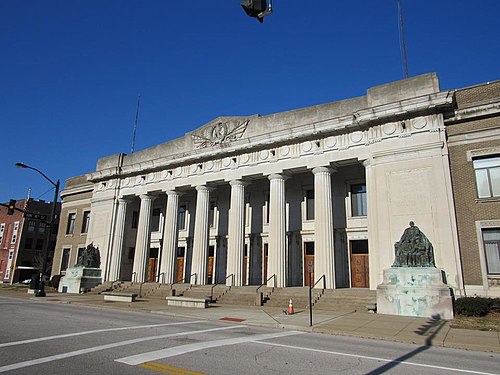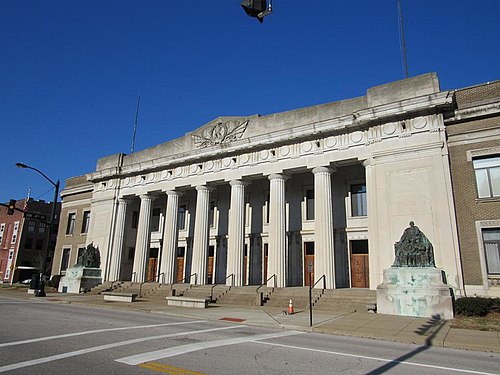Here’s a breakdown to compare the tax rates and contributions of the top 1% from the 1950s to today:
1. Top Marginal Tax Rate in the 1950s vs. Today:
- 1950s: The top marginal tax rate was as high as 91% during parts of the 1950s (from 1951 to 1963). However, few people paid this rate due to deductions and exclusions.
- Today: The top marginal tax rate in the U.S. is 37% as of 2023, plus potential state and local taxes, bringing the effective rate higher in some states.
2. Effective Tax Rate for the Top 1%:
- 1950s: Estimates suggest that the top 1% paid an effective federal income tax rate of around 42-45%. The significant gap between the marginal and effective tax rate was due to tax deductions and exclusions.
- Today: In 2020, the effective tax rate for the top 1% was approximately 26-28% at the federal level, though it can vary slightly based on deductions and state taxes.
3. Percentage of Total Income Taxes Paid by the Top 1%:
- 1950s: The top 1% paid roughly 30-35% of all federal income taxes.
- Today: The top 1% pays about 40% of all federal income taxes in the U.S. (data as of 2020).
4. How Many People Pay the Top Rates?
- 1950s: The number of people actually paying the top 91% rate was minuscule, likely fewer than 10,000 households in a country of over 150 million people. Most wealthy individuals managed to pay a lower effective rate through deductions.
- Today: The top 1% of income earners consist of approximately 1.4 million households (based on the U.S. population in 2023).
Comparative Table
| Metric | 1950s | Today (2023) |
|---|---|---|
| Top Marginal Tax Rate | 91% | 37% |
| Effective Tax Rate (Top 1%) | 42-45% | 26-28% |
| % of Total Income Taxes Paid (Top 1%) | 30-35% | ~40% |
| Number of People Paying Top Rates | Fewer than 10,000 households | ~1.4 million households |
Summary:
- Tax Policy Center – Data on the top marginal and effective tax rates, as well as the share of taxes paid by the top 1% over time:
- Tax Policy Center, “Historical Highest Marginal Income Tax Rates” and “Distribution of Federal Income Taxes by Income Percentile”
- Available at: https://www.taxpolicycenter.org
- Internal Revenue Service (IRS) – Data on total federal income tax contributions by income groups:
- IRS, “SOI Tax Stats – Individual Income Tax Returns”
- Available at: https://www.irs.gov
- Congressional Budget Office (CBO) – Reports on federal taxes and effective tax rates for the top income earners:
- CBO, “The Distribution of Household Income and Federal Taxes”
- Available at: https://www.cbo.gov
- Peter G. Peterson Foundation – Analysis of tax rates and share of taxes paid by income groups:
- Peterson Foundation, “How Do Federal Income Tax Rates for the Wealthy Compare Today to the 1950s?”
- Available at: https://www.pgpf.org
& if not What was the Reality Compared to Today?
Here’s a breakdown to compare the tax rates and contributions of the top 1% from the 1950s to today:
1. Top Marginal Tax Rate in the 1950s vs. Today:
- 1950s: The top marginal tax rate was as high as 91% during parts of the 1950s (from 1951 to 1963). However, few people paid this rate due to deductions and exclusions.
- Today: The top marginal tax rate in the U.S. is 37% as of 2023, plus potential state and local taxes, bringing the effective rate higher in some states.
2. Effective Tax Rate for the Top 1%:
- 1950s: Estimates suggest that the top 1% paid an effective federal income tax rate of around 42-45%. The significant gap between the marginal and effective tax rate was due to tax deductions and exclusions.
- Today: In 2020, the effective tax rate for the top 1% was approximately 26-28% at the federal level, though it can vary slightly based on deductions and state taxes.
3. Percentage of Total Income Taxes Paid by the Top 1%:
- 1950s: The top 1% paid roughly 30-35% of all federal income taxes.
- Today: The top 1% pays about 40% of all federal income taxes in the U.S. (data as of 2020).
4. How Many People Pay the Top Rates?
- 1950s: The number of people actually paying the top 91% rate was minuscule, likely fewer than 10,000 households in a country of over 150 million people. Most wealthy individuals managed to pay a lower effective rate through deductions.
- Today: The top 1% of income earners consist of approximately 1.4 million households (based on the U.S. population in 2023).
Comparative Table
| Metric | 1950s | Today (2023) |
|---|---|---|
| Top Marginal Tax Rate | 91% | 37% |
| Effective Tax Rate (Top 1%) | 42-45% | 26-28% |
| % of Total Income Taxes Paid (Top 1%) | 30-35% | ~40% |
| Number of People Paying Top Rates | Fewer than 10,000 households | ~1.4 million households |
Summary:
- Tax Policy Center – Data on the top marginal and effective tax rates, as well as the share of taxes paid by the top 1% over time:
- Tax Policy Center, “Historical Highest Marginal Income Tax Rates” and “Distribution of Federal Income Taxes by Income Percentile”
- Available at: https://www.taxpolicycenter.org
- Internal Revenue Service (IRS) – Data on total federal income tax contributions by income groups:
- IRS, “SOI Tax Stats – Individual Income Tax Returns”
- Available at: https://www.irs.gov
- Congressional Budget Office (CBO) – Reports on federal taxes and effective tax rates for the top income earners:
- CBO, “The Distribution of Household Income and Federal Taxes”
- Available at: https://www.cbo.gov
- Peter G. Peterson Foundation – Analysis of tax rates and share of taxes paid by income groups:
- Peterson Foundation, “How Do Federal Income Tax Rates for the Wealthy Compare Today to the 1950s?”
- Available at: https://www.pgpf.org











